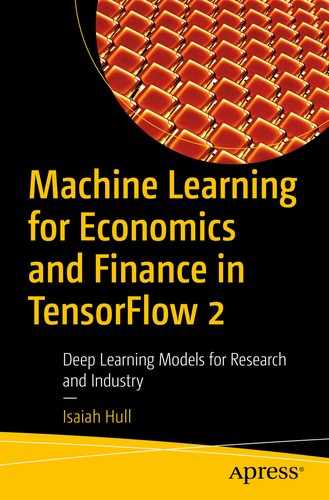Book Description
Find solutions to problems in economics and finance using tools from machine learning. ML has taken time to move into the space of academic economics. This is because empirical work in economics is concentrated on the identification of causal relationships in parsimonious statistical models; whereas machine learning is oriented towards prediction and is generally uninterested in either causality or parsimony. That leaves a gap for both students and professionals in the economics industry without a standard reference.This book focuses on economic problems with an empirical dimension, where machine learning methods may offer something of value. This includes coverage of a variety of discriminative deep learning models (DNNs, CNNs, RNNs, LSTMs, and DQNs), generative machine learning models, random forests, gradient boosting, clustering, and feature extraction. You'll also learn about the intersection of empirical methods in economics and machine learning, including regression analysis, text analysis, and dimensionality reduction methods, such as principal component analysis.TensorFlow offers a toolset that can be used to set up and solve any mathematical model, including those commonly used in economics. This book is structured to teach through a sequence of complete examples, each framed in terms of a specific economic problem of interest or topic. Otherwise complicated content is then distilled into accessible examples, so you can use TensorFlow to solve workhorse models in economics and finance.You will:Define, train, and evaluate machine learning models in TensorFlow 2Apply fundamental concepts in machine learning, such as deep learning and natural language processing, to economic and financial problemsSolve workhorse models in economics and finance.
